Don't wanna be here? Send us removal request.
Text
Top Drone Myths Busted by Remote Flyer: What You Really Need to Know
Think drones are too hard to fly? Or that you need a license to use one recreationally? At Remote Flyer, we’re setting the record straight. This myth-busting post clears up common misconceptions about drones, from legal myths and technical misunderstandings to exaggerated media fears. We provide accurate, up-to-date info about drone laws, safety, ease of use, and affordability. Whether you're hesitant to get started or looking to educate others, Remote Flyer delivers the facts you can trust.
0 notes
Text
Drone Flying Tips for Beginners: Start Your Journey with Remote Flyer
Are you new to drones and unsure where to begin? Don’t worry—Remote Flyer is here to guide you from your first takeoff to confident flying. This beginner-friendly post shares expert tips to help you master the basics, avoid common mistakes, and get the most out of your drone experience. From understanding flight modes and pre-flight checklists to camera controls and battery care, Remote Flyer simplifies it all. Whether you're flying for fun or future aerial photography, this guide is the perfect launchpad for your journey.
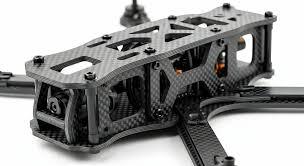
0 notes
Text
Remote Flyer Explains Drone Battery Life: How to Maximize Flight Time
Battery life is one of the most important factors when flying a drone, especially during long shoots or outdoor adventures. At Remote Flyer, we break down how drone batteries work, what affects flight duration, and how to optimize power usage for longer flights. This article covers charging safety, battery maintenance tips, the best backup batteries, and real-world flight time comparisons of popular models. Whether you're a beginner or a seasoned pilot, Remote Flyer ensures you get the most from every charge.
0 notes
Text
Beginner Drone Mistakes to Avoid – Advice from Remote Flyer
Every drone pilot starts somewhere, and mistakes are part of the learning curve. But with the right guidance, you can avoid the most common pitfalls. In this detailed blog, Remote Flyer highlights the top beginner mistakes—like skipping pre-flight checks, flying too far, ignoring wind conditions, or overlooking safety laws. We share real experiences, practical fixes, and expert tips to help you fly better from day one. At Remote Flyer, we believe smart flying begins with smart learning.
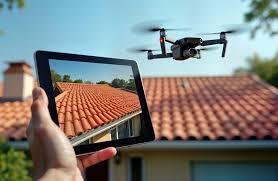
0 notes
Text
Understanding Drone Flight Modes – A Complete Guide by Remote Flyer
Modern drones come equipped with various flight modes designed to help pilots capture better footage, perform stunts, or fly safely in complex conditions. In this detailed guide, Remote Flyer explains each flight mode—such as GPS Mode, ATTI Mode, Follow Me, Waypoints, and Sport Mode—in clear and simple terms. We also share when and how to use these features to get the most out of your flying experience. Whether you're a beginner or seasoned pilot, Remote Flyer helps you master flight controls with confidence.
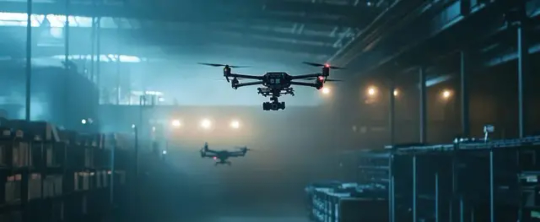
0 notes
Text
The Rise of FPV Drones: Remote Flyer’s Guide to First-Person Flight
FPV (First-Person View) drones have taken the drone community by storm, offering thrilling, immersive flight experiences. In this detailed guide, Remote Flyer explores what FPV is, how it works, and which drones are best for beginners and enthusiasts. We’ll cover the gear you need, how to get started safely, and what to expect from your first FPV flight. Whether you're into racing, freestyle, or cinematic flying, Remote Flyer helps you dive into the FPV world with confidence and excitement.
0 notes
Text
How to Fly a Drone: Complete Beginner’s Guide by Remote Flyer
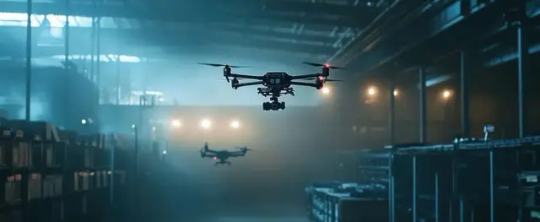
If you've just bought your first drone and don't know where to begin, this detailed beginner's guide from Remote Flyer is your perfect starting point. We walk you through the fundamental skills needed to operate a drone safely and confidently. You'll learn how to calibrate your drone, understand flight modes, read weather conditions, handle emergencies, and stay compliant with local laws and airspace regulations. At Remote Flyer, our goal is to empower new pilots with knowledge that ensures safety, fun, and longevity in the drone hobby. With this guide, you'll go from unsure to unstoppable in no time.
0 notes
Text
The Future of Drones: Innovations and Trends to Watch in 2025
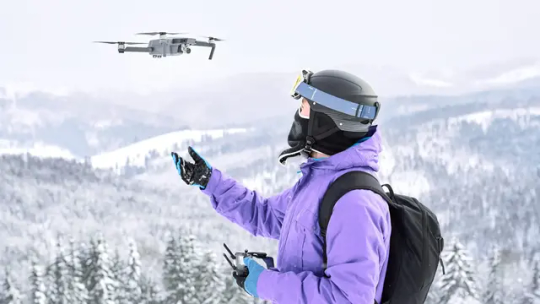
Drones have come a long way from being just hobbyist gadgets to becoming essential tools in industries like agriculture, security, filmmaking, and logistics. As technology advances, drones are becoming smarter, more efficient, and capable of handling more complex tasks. In this article, we will explore the latest trends and innovations shaping the future of drones in 2025 and beyond.
1. AI-Powered Drones
Artificial Intelligence (AI) is revolutionizing the drone industry, enabling drones to make intelligent decisions without human intervention. AI-powered drones can process large amounts of data in real-time, improving navigation, obstacle avoidance, and object recognition.
Some key AI-driven advancements include:
Autonomous Flight: Drones can fly without manual control, using AI to analyze their surroundings and adjust their flight paths accordingly.
Facial and Object Recognition: AI-powered drones can identify people, vehicles, and objects, making them useful for security and surveillance applications.
Advanced Obstacle Avoidance: With AI, drones can detect and avoid obstacles dynamically, reducing crashes and improving safety.
AI will continue to play a crucial role in drone development, making them more efficient for various industries, from search-and-rescue missions to package deliveries.
2. Drone Delivery: The Next Big Leap
E-commerce giants like Amazon and Walmart are investing heavily in drone delivery services, and by 2025, we could see widespread adoption. Drones offer faster, more eco-friendly, and cost-effective delivery options, especially in remote areas where traditional logistics are inefficient.
Some of the expected advancements in drone delivery include:
Longer Flight Ranges: Improvements in battery technology and solar-powered drones will allow for longer flights.
Payload Optimization: Drones will be designed to carry heavier loads efficiently.
Smart Route Planning: AI will enable drones to determine the fastest and safest delivery routes.
With regulatory frameworks evolving, drone deliveries could become a common sight in urban areas, making same-day delivery even faster and more accessible.
3. 5G and Cloud Connectivity for Real-Time Data Sharing
The integration of 5G networks will significantly enhance drone communication and data processing. With 5G, drones can:
Transmit high-definition video in real-time, making them ideal for surveillance and live streaming.
Process and share data instantly, allowing for faster decision-making.
Operate in swarms, enabling multiple drones to coordinate in real time for tasks like agriculture spraying or search-and-rescue missions.
5G connectivity will allow for seamless drone operations in industries like infrastructure inspection, environmental monitoring, and disaster management.
4. Swarm Technology: Coordinated Drone Operations
Swarm drones—multiple drones working together in a coordinated manner—are expected to transform industries like agriculture, defense, and entertainment. These drones can:
Cover large areas quickly for crop monitoring and pest control in agriculture.
Work together in search-and-rescue operations to locate missing persons efficiently.
Create stunning aerial light shows, replacing traditional fireworks displays.
As AI and communication technology improve, drone swarms will become more efficient, opening up new possibilities for businesses and governments.
5. Advanced Drone Batteries and Power Solutions
One of the biggest limitations of drones today is battery life. However, in 2025, we can expect major improvements in drone power sources, such as:
Solid-State Batteries: Offering higher energy density, faster charging times, and longer flight durations.
Hydrogen Fuel Cells: Providing extended flight times with eco-friendly emissions.
Solar-Powered Drones: Ideal for long-term surveillance and environmental monitoring.
These advancements will enable drones to operate for longer durations, making them more practical for commercial and industrial applications.
6. Regulation and Safety Improvements
With drones becoming more common, governments worldwide are updating regulations to ensure safe and responsible drone usage. Some expected regulatory changes include:
Remote ID Requirements: Drones may be required to broadcast identification details for tracking and security purposes.
Stricter No-Fly Zones: More controlled airspaces, especially around airports and sensitive areas.
Licensing and Training Programs: Governments may introduce new certification programs for commercial drone operators.
These measures will help integrate drones into everyday life while maintaining airspace safety and privacy.
7. Drones in Agriculture: Precision Farming
Agriculture is one of the biggest beneficiaries of drone technology. By 2025, precision farming using drones will become even more advanced, allowing farmers to:
Monitor crop health with multispectral imaging.
Optimize irrigation by identifying dry areas.
Apply pesticides and fertilizers efficiently with automated spraying drones.
These advancements will help farmers increase yields while reducing costs and environmental impact.
8. Drones for Emergency Response and Disaster Relief
Drones are playing a crucial role in disaster response and relief operations. In the coming years, drones will be used for:
Delivering medical supplies in emergency situations.
Locating survivors in disaster-struck areas.
Assessing damage after natural calamities like earthquakes, floods, or wildfires.
With AI and improved battery life, drones will become an essential tool for first responders, saving lives and accelerating disaster recovery efforts.
Final Thoughts
The future of drones is incredibly promising. With advancements in AI, battery technology, 5G connectivity, and automation, drones will revolutionize industries and become a part of everyday life. Whether it's delivering packages, assisting in agriculture, or responding to emergencies, drones will continue to evolve and improve efficiency.
As regulations become clearer and technology advances, we can expect drones to be safer, smarter, and more capable than ever before. If you're a drone enthusiast, this is an exciting time to explore the endless possibilities that drone technology has to offer.
0 notes
Text
Mastering the Skies: A Beginner’s Guide to Flying Drones
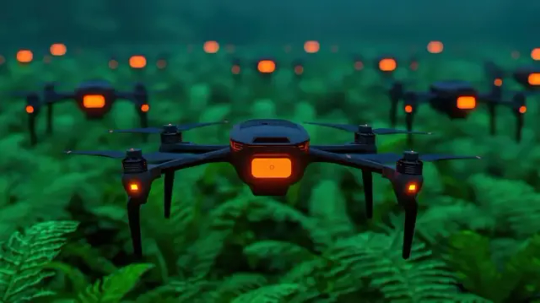
Drones have transformed how we capture stunning visuals, explore landscapes, and experience the thrill of recreational flying. At Remote Flyer, we’re passionate about sharing the joy of drone flying, a hobby that has captivated tech enthusiasts and creatives worldwide. If you're new to drones, Remote Flyer is here to guide you through the essentials of getting started and mastering the skies.
Why Choose Drone Flying as a Hobby?
Flying drones isn’t just about navigating a gadget through the air; it’s a thrilling blend of technology, art, and exploration. Whether you're capturing cinematic aerial shots, inspecting hard-to-reach areas, or simply enjoying the joy of flight, drones offer a unique perspective of the world.
Beyond entertainment, drones are used in fields like agriculture, real estate, and search and rescue, making this hobby both fun and potentially lucrative.
Step 1: Choosing Your First Drone
Not all drones are created equal. Here’s what to consider when picking your first flying companion:
Budget: Start with an affordable model to learn the basics without worrying about costly crashes. Options like the DJI Mini SE or Holy Stone HS720 are great for beginners.
Ease of Use: Look for drones with beginner-friendly features like altitude hold, headless mode, and one-key takeoff/landing.
Camera Quality: If aerial photography interests you, prioritize drones with high-quality cameras (1080p or higher).
Flight Time: Battery life ranges from 10 to 30 minutes. Beginners may want a drone with a decent flight time and the option to purchase spare batteries.
Step 2: Know the Rules of the Sky
Before you launch your drone, familiarize yourself with the local laws and regulations. In most countries, drones weighing more than 250 grams require registration, and operators must follow airspace rules to avoid fines or legal troubles.
Here are some general guidelines:
Fly below 400 feet to stay within legal limits.
Avoid flying over crowds, private property, or restricted areas like airports.
Always maintain a visual line of sight with your drone.
For U.S. pilots, the FAA’s TRUST certification is a must for recreational flyers.
Step 3: Mastering the Basics of Drone Flying
Once you’ve chosen your drone and learned the rules, it’s time to take flight. Practice makes perfect, so start with these foundational tips:
Start Indoors or in Open Spaces: Begin in a large, open area free of obstacles like trees or power lines. Indoor practice with toy drones can also help you get comfortable with controls.
Understand the Controls: Most drones come with a remote featuring two joysticks. One controls altitude and rotation, while the other manages forward, backward, and sideways movements.
Practice Hovering: A steady hover is essential for smooth footage and precise maneuvers. Spend time mastering this skill before moving on to advanced techniques.
Learn to Land Safely: Controlled landings are crucial to avoid damaging your drone. Practice landing gently on various surfaces.
Step 4: Capture Stunning Aerial Photos and Videos
One of the biggest draws of drone flying is the ability to capture jaw-dropping visuals. To elevate your aerial photography, consider the following tips:
Golden Hours: Fly during sunrise or sunset for softer lighting and dramatic skies.
Rule of Thirds: Frame your shots using the gridlines on your drone’s camera to create visually balanced compositions.
Smooth Movements: Avoid jerky controls for professional-looking footage. Use slow, steady maneuvers for cinematic results.
Step 5: Maintain Your Drone
A well-maintained drone lasts longer and performs better. Keep these maintenance tips in mind:
Inspect your drone for damage before and after each flight.
Clean the propellers and camera lens regularly.
Store batteries properly and avoid overcharging them.
Update your drone’s firmware to access new features and improvements.
Common Beginner Mistakes to Avoid
Learning to fly a drone comes with its fair share of challenges. Here are some pitfalls to steer clear of:
Skipping the Manual: Always read the manual to understand your drone’s capabilities and settings.
Ignoring Weather Conditions: Wind, rain, and extreme temperatures can affect flight stability and battery performance.
Flying Beyond Your Skill Level: Start small and gradually progress to advanced maneuvers and longer distances.
Advanced Skills to Explore
Once you’ve mastered the basics, take your drone flying to the next level:
First-Person View (FPV) Flying: Use FPV goggles for an immersive experience.
Autonomous Flight Modes: Experiment with features like “Follow Me,” waypoint navigation, and orbit mode.
Racing Drones: Challenge yourself with high-speed drones designed for competitive racing.
Final Thoughts
Drone flying is an exciting journey that combines skill, creativity, and technology. With the right drone, practice, and knowledge, you’ll be soaring the skies like a pro in no time.
Whether you’re capturing stunning visuals or simply enjoying the thrill of flight, the sky truly is the limit. Start your journey today, and who knows? You might even turn your passion for drones into a rewarding career.
Happy flying!
0 notes
Text
Unlocking the World of Drones with Remote Flyer

Welcome to the captivating world of drones! Whether you're a tech enthusiast, a professional aerial photographer, or someone who simply enjoys exploring the skies, drones offer endless possibilities. At Remote Flyer, we're passionate about sharing everything you need to know about drones, from their mechanics and features to tips for safe flying and product recommendations. Let us take you on a journey that elevates your drone knowledge and helps you soar to new heights.
Why Drones Are Taking Off Everywhere
Drones have become a staple in modern technology, revolutionizing industries and hobbies alike. These compact, flying marvels have applications in:
Aerial Photography and Videography: Capturing breathtaking views from angles that were once impossible.
Delivery Services: Companies like Amazon are testing drone deliveries for faster service.
Agriculture: Monitoring crops, spraying pesticides, and gathering data to improve yields.
Search and Rescue: Assisting in locating missing persons and delivering emergency supplies.
Recreation: Offering a fun and educational experience for hobbyists.
At Remote Flyer, we explore these innovations and provide insights into how drones are shaping the future.
Starting Your Drone Journey
Getting started with drones can be overwhelming, but that's where Remote Flyer comes in. We simplify the process by breaking it down into manageable steps:
Choose the Right Drone: With so many options available, it's important to select a drone that matches your needs and skill level. Are you a beginner looking for something user-friendly, or a pro seeking advanced features?
Learn the Basics: Understanding the controls, flight modes, and regulations is crucial before you take off.
Practice in a Safe Space: Start in open, obstacle-free areas to get comfortable with flying.
Understand Regulations: Each country has its own set of rules for drone usage. Be sure to familiarize yourself with local laws.
Tips for Better Drone Flying
Flying a drone isn't just about mastering the controls; it's also about developing good habits. Here are some tips from Remote Flyer to enhance your experience:
Pre-Flight Checklist: Always check your drone's battery level, weather conditions, and surroundings before takeoff.
Master Hovering: Stability is key. Practice hovering to improve control and precision.
Avoid Crowds: Flying in crowded areas can be risky. Always prioritize safety.
Use GPS Features: Many drones come with GPS-assisted flight modes to help you maintain control and track your drone's location.
Experiment with Camera Angles: If your drone has a camera, play around with different angles to capture stunning footage.
Top Drone Picks at Remote Flyer
We know the importance of choosing the right drone, and at Remote Flyer, we\u2019ve reviewed some of the best options on the market. Here are a few favorites:
DJI Mini 3 Pro: Perfect for beginners, this lightweight drone offers impressive features like 4K video and obstacle sensing.
Autel EVO Lite+: A great choice for intermediate users, offering long flight times and excellent camera quality.
DJI Mavic 3: For professionals, this drone delivers unparalleled image quality and advanced flight modes.
Holy Stone HS720E: A budget-friendly option packed with features like GPS and 4K recording.
Each of these drones has been tested and reviewed by our team to ensure you get the best value for your investment.
Common Drone Flying Mistakes and How to Avoid Them
Even seasoned pilots make mistakes. Here are some common pitfalls and tips to sidestep them:
Neglecting Updates: Firmware updates are crucial for optimal performance and safety. Regularly update your drone\u2019s software.
Ignoring Weather Conditions: Strong winds and rain can disrupt flights. Always check the weather before flying.
Flying Beyond Line of Sight: This can lead to losing your drone. Always keep it within your visual range.
Overlooking Battery Life: Low battery mid-flight can spell disaster. Plan your flights to ensure a safe return.
The Remote Flyer Affiliate Advantage
At Remote Flyer, we\u2019re committed to providing honest reviews and recommendations. Our site participates in the Amazon LLC Associates Program and other affiliate programs, which means we may earn a commission on purchases made through our links. This helps us keep the site running while delivering high-quality, unbiased content to our readers.
Join the Drone Community
Drones are more than just a gadget; they\u2019re a gateway to a vibrant community of enthusiasts. By joining the Remote Flyer community, you\u2019ll gain access to:
Expert Advice: From troubleshooting to advanced techniques, our blog has you covered.
Product Reviews: Honest assessments to help you make informed decisions.
Latest News: Stay updated on industry trends and innovations.
Engaging Content: Tutorials, tips, and tricks to improve your skills.
Why Choose Remote Flyer?
With countless drone blogs available, why should you choose Remote Flyer? Here\u2019s what sets us apart:
Passion for Drones: Flying drones isn\u2019t just a hobby; it\u2019s our obsession.
Comprehensive Content: We cover everything from beginner guides to expert-level tips.
User-Centric Approach: Our goal is to make drone flying accessible and enjoyable for everyone.
Affiliate Transparency: We\u2019re upfront about our partnerships and committed to recommending only the best products.
Conclusion
Drones offer a unique way to explore, create, and innovate. At Remote Flyer, our mission is to empower you with the knowledge and tools to make the most of your drone experience. Whether you\u2019re just starting out or looking to level up your skills, we\u2019re here to guide you every step of the way. So, take to the skies with confidence and let Remote Flyer be your trusted co-pilot in the thrilling world of drones!
0 notes
Text
The Ultimate Guide to Drones: Everything You Need to Know with Remote Flyer
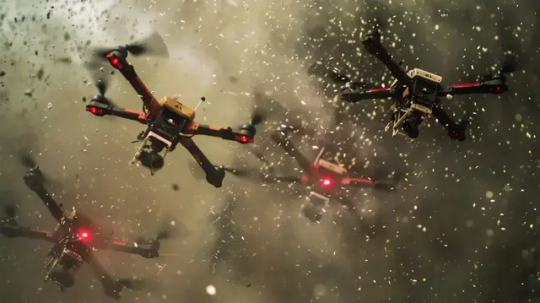
In recent years, drones have become a hot topic among tech enthusiasts and hobbyists alike. Whether you're a beginner looking to explore this fascinating hobby or an experienced pilot eager to learn more about the latest drone technology, you’ve come to the right place. Welcome to Remote Flyer, your go-to resource for all things drone-related!
At Remote Flyer, we are passionate about flying drones and have dedicated this platform to bringing you the best advice, reviews, and information on drone models, tips for beginners, flying techniques, and much more. If you’re considering diving into the world of drones, this guide will help you understand the basics, the best drones for various uses, and how to fly like a pro!
What Are Drones?
Drones, or Unmanned Aerial Vehicles (UAVs), are aircraft that don’t require a human pilot onboard. They are controlled remotely and can be equipped with cameras, sensors, and other specialized equipment. Drones are commonly used for aerial photography, surveying, mapping, deliveries, and even recreation. They come in various shapes, sizes, and specifications, making it easier than ever to find one that suits your needs.
Why Fly Drones?
Flying drones is more than just an exciting hobby. It’s an experience that allows you to see the world from a completely new perspective. Whether you’re capturing stunning aerial photographs, exploring remote landscapes, or simply enjoying the thrill of flying, drones offer endless opportunities for fun and creativity.
At Remote Flyer, we believe that flying a drone is a serious hobby for many, but it can also be a lucrative career for those looking to enter industries such as film production, agriculture, surveying, or real estate. The drone industry is booming, and now is the perfect time to get started. Whether you want to make a hobby of it or turn it into a profession, there’s something for everyone in the world of drones.
Types of Drones
When shopping for your first drone, it’s important to understand the different types available. Drones can vary greatly in terms of size, features, price, and intended use. Here’s a breakdown of the most common types:
Recreational Drones
If you’re just starting out, recreational drones are a great choice. These drones are lightweight, easy to fly, and often come with beginner-friendly features like altitude hold and automatic takeoff. They're perfect for casual flying, and many come with cameras to capture photos and videos from the sky.
Camera Drones
If your goal is to capture high-quality aerial photos or videos, then a camera drone is the way to go. These drones are equipped with professional-grade cameras that offer incredible resolution and stability, making them ideal for photography enthusiasts or even aspiring filmmakers.
Racing Drones
Racing drones are designed for speed and agility. These drones are built for enthusiasts who want to compete in drone racing events. They are highly customizable, allowing for precise tuning to suit individual racing styles.
Professional Drones
These drones are meant for serious professionals working in fields such as surveying, agriculture, mapping, or cinematography. They often come with advanced features like thermal cameras, GPS, and long battery life, making them perfect for commercial use.
Toy Drones
If you’re looking for an affordable option to start your drone journey, toy drones are a good choice. While they may not have the advanced features of higher-end drones, they provide a fun flying experience at an entry-level price.
Choosing the Right Drone
With so many options available, choosing the right drone can be overwhelming. At Remote Flyer, we recommend considering the following factors to help you make the best decision:
Purpose: What do you plan to use the drone for? Are you interested in aerial photography, racing, or just casual flying?
Skill Level: Are you a beginner or a seasoned drone pilot? Some drones are designed specifically for beginners, while others are made for more experienced pilots.
Budget: Drones can range in price from under $100 to thousands of dollars. Determine your budget before making a purchase.
Camera Quality: If you’re interested in aerial photography or videography, look for a drone with a high-quality camera and stabilization features.
Flight Time: Consider how long the drone can fly on a single charge. Flight time typically ranges from 20 minutes to over an hour, depending on the model.
Tips for Flying Your Drone
Flying a drone can be a thrilling experience, but it’s essential to do it safely and responsibly. Here are some tips to help you become a skilled drone pilot:
Start Slow: If you're a beginner, take the time to practice flying in an open area away from obstacles. Start with basic maneuvers, such as hovering and slowly moving forward, backward, and sideways.
Understand the Controls: Familiarize yourself with your drone’s remote control. Most drones have two sticks for controlling altitude, direction, and rotation. Practice until you feel comfortable with the controls before attempting advanced maneuvers.
Follow Local Regulations: Always make sure you're flying in accordance with local laws and regulations. This includes flying below a certain altitude, staying clear of restricted airspace, and respecting the privacy of others.
Pre-Flight Checklist: Before each flight, check the drone’s battery, propellers, and camera (if applicable). Make sure everything is in working order to avoid any issues during flight.
Fly Responsibly: Drones should be flown in safe, open spaces. Avoid flying over crowds, near airports, or in weather conditions that could make flying unsafe.
Why Choose Remote Flyer for Your Drone Needs?
At Remote Flyer, we’re committed to providing you with all the information you need to make the best decisions about drones. Our blog covers a wide range of topics, from drone reviews to flying tips, so you can stay up-to-date with the latest trends in the drone industry.
We also participate in the Amazon LLC Associates Program, meaning we earn a small commission on products purchased through our links, helping us continue to provide high-quality content for you. Whether you’re buying your first drone or upgrading to a professional model, Remote Flyer is here to guide you every step of the way.
Conclusion
The world of drones is vast and exciting, and at Remote Flyer, we’re here to help you navigate it with ease. Whether you’re a beginner or a seasoned pro, drones offer endless opportunities for fun, creativity, and even career growth. So, grab your drone, head to the skies, and let your journey begin!
Stay tuned to Remote Flyer for more tips, reviews, and everything you need to know about flying drones. Happy flying!
1 note
·
View note